




 |
 |
 |
 |
 |
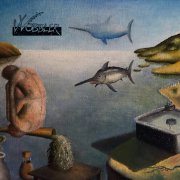 |
Demo (2003) (2003, 28.12) ****½/TTTTImperial Winter White DwarfLeprechaun Behind the Door |
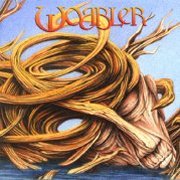 |
Hinterland (2005, 56.52) ****/TTTT½Serenade for 1652Hinterland Rubato Industry Clair Obscur |
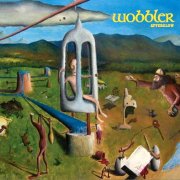 |
Afterglow (2009, 34.41) ****½/TTTT½The HaywainImperial Winter White Interlude In Taberna Armoury |
 |
Rites at Dawn (2011, 45.58) ****½/TTTTTLudicLa Bealtaine In Orbit This Past Presence A Faerie's Play The River Lucid Dreams |
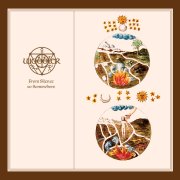 |
From Silence to Somewhere (2017, 46.34) *****/TTTTFrom Silence to SomewhereRendered in Shades of Green Fermented Hours Foxlight |
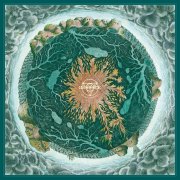 |
Dwellers of the Deep (2020, 45.41) ****½/TTTTBy the BanksPart I - Visions From Within Part II - Argentum Ormr Five Rooms Naiad Dreams Merry Macabre Part I - The Quarry & the Feast Part II - Beneath the Velvet Shroud Part III - The Bird of Hermes |
Current availability:
Mellotrons/Chamberlin used:
In 2003, the year of Änglagård's first brief reunion, appropriately enough, a new name appeared in Scandinavian progressive circles: Wobbler. Um, doesn't have quite the same gravitas as Anekdoten or White Willow, does it? Makes Landberk sound sensible and hasn't even got the excuse that it's a place-name. Moniker aside, however, Wobbler were the latest entrant in the New Wave of New Traditionalist Scandinavian Prog (hey, the NWNTSP! Catchy or what? Sounds like an online bank or something), insisting on 'authentic' equipment and full-on symphonic prog, with nary a trace of '80s neo-. Thank Christ.
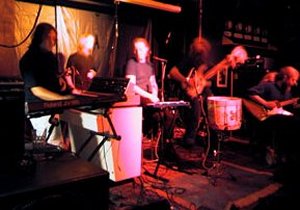 |
|
| photo: Sven Eriksen | |
Their two downloadable demos from 2003 make a near-half hour mini-album in themselves and the compositional quality is easily high enough for official release. One caveat, however: do you like Änglagård? If not, you're probably unlikely to find much to praise in Wobbler's demos. There's no getting around it; these two tracks sound like Hybris offcuts, pure and simple. There are dissimilarities: Änglagård never sang in English, or very much at all (not that Wobbler exactly overburden themselves with lyrics) and there's more (monophonic, of course) synth work, although they're better than the not-quite-as-good-as-they-should've-been Sinkadus. Both tracks follow the now-tried and tested formula of 'play one bit, play another, play a third etc., occasionally harking back to an earlier bit for continuity', which seems to be the one thing that puts some prog fans off Änglagård, but works perfectly well for many of us. The material is a little unoriginal, but after a few plays, many of the themes begin to stick, unlike the bulk of Sinkadus' output. What's more, all the analogue keys are genuine, with an excellent 'hold the chord until the tapes grind to a halt' Mellotron bit in Leprechaun Behind The Door. Both tracks, incidentally, are now available on Bandcamp and were also reworked for 2009's Afterglow.
Two years on, Hinterland has to be the most-anticipated progressive release of 2005, with the band being invited to play NEARfest before its release, in the (relative) media feeding-frenzy surrounding their formation. And the end result is... not bad. Not bad? Is that the best you can come up with? Well, the same criticisms apply as to their demos, but, surprisingly, more so. You would've thought they'd have ironed out some of the more derivative bits of their style in the two years since then, but the album material is actually less original (spot the cheeky Crimson quote about six minutes into the title track, not to mention the Emersonalike Moog patch later on...), although there are plenty of worthwhile moments. Given that the album features only four tracks in nearly an hour, it comes as a surprise to learn that opener Serenade For 1652 is a mere 41 seconds long, leaving two medium-long pieces and the near-half hour title track. Can Wobbler sustain interest over a 27-minute piece, I hear you cry? Well, sort of. Like the rest of the album (particularly closer Clair Obscur), the track has several transcendental moments, which is more than I can say for most albums, but too much of it has a 'heard it all before' vibe about it, sadly, knocking a whole star from the album's potential rating. Don't get me wrong; this is a very good album and if you hadn't heard Änglagård, possibly a great one, but when Rubato Industry strikes up like a Larks' Tongues outtake, you have to hope that Wobbler will find their own style by the time album no. 2 comes around.
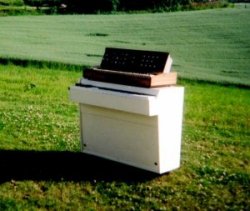 |
As for the album's Mellotronic input, Lars Fredrik Frøislie uses three different machines, for some reason, including one that I believe is ex-Bulgarians FSB, with, apparently, a whole host of tape frames, though it has to be said, the bulk of the obvious use is the old mainstays strings/choir/flutes, although the brief Serenade For 1652 seems to be largely cellos and I heard some Mellotron vibes somewhere. The playing's excellent, as it is for all the keys, but the 'choppy' choir part on Clair Obscur is a dead ringer for Änglagård's Jordrok, which in turn is heavily influenced by SFF's Pictures and as for the previously-mentioned pitchbent strings in Hinterland... Cheeky homage or blunt rip-off? Either way, it's impossible to deny that this is a major Mellotron release, docked a mere half 'T' for unoriginality.
Speaking of those demos... It's taken Wobbler four years to produce their second album and it's... the two demo tracks, re-recorded and sensibly retitled. I understand the band have suffered some form of collective writer's block and at least this material gets an official release this way, despite being a full ten years old. Afterglow is far shorter than their debut, unsurprisingly, given that it consists of two longish tracks and three very short ones, so it certainly doesn't outstay its welcome, all five tracks hitting the spot in their different ways, from The Haywain's under-a-minute mediævalisms to the two lengthy pieces' twists and turns. Admittedly, said pieces still sound like Änglagård, but look on the bright side: they could sound like The Flower Kings' recent work. Lars splatters his Mellotrons all over the album with a superb scattergun approach, layers of strings, choirs and flutes throughout Imperial Winter White and In Taberna, plus cellos, vibes and church organ and doubtless other, harder-to-spot sounds hidden away in the mix. He sticks some strings under The Haywain's real woodwind and gets pretty much a Mellotron church organ solo on closer Armoury, making for a fine album, both musically and Mellotronically.
By 2011, I think it's fair to say that there's little new to say if you wish to write symphonic progressive rock; it's more about putting all the pieces in the right order, which Wobbler do with aplomb. Rites of Dawn is another step up, even if its first half recalls Yes in places, particularly La Bealtaine, although they sound more like themselves as the album progresses (ho ho), probably reaching a creative peak on A Faerie's Play. Lengthwise, the album falls between its two predecessors, eschewing Hinterland's overlong approach, while being more of a fully-formed release than Afterglow (which, to be fair, has an excuse for its brevity), no one track outstaying its welcome. Lars plays not only the expected stacks of Mellotron, but also his new (so to speak) Chamberlin M1, although I'm ashamed to say that I can't actually tell you where he plays what. Anyway, we get strings on pretty much every track, particularly the huge crescendo at the end of The River, flute (notably the neat solo towards the end of This Past Presence), choir and cello scattered throughout, plus (I believe) vibes on brief closer Lucid Dreams. All in all, chaps, something of a tour de force.
PRAISE BE! They've done it! After well over a decade, Wobbler seem to have finally found their own voice. No, of course 2017's From Silence to Somewhere isn't, you know, original, not as in 'genuinely original music' - I mean, it's not even original by symphonic prog standards - but the band finally synthesize their influences into something that sounds like them, rather than a fairly obvious amalgam of two or three other bands. My initial temptation was to name the opening twenty-minute title track as 'album highlight', while the Hackett-esque Foxlight is also rather splendid, but, on reflection, 'top track' award goes to the blistering Fermented Hours, an absolute ripper of a piece, building to a superb climax. When so much modern progressive rock is, at best, a pale imitation of the style's originators (if we're lucky), to see a band go all-out, as Wobbler have done this time round, is a joy to hear. 'Just' Frøislie's Mellotron(s) this time round, used with considerable restraint, actually, with strings, brass and choirs on the title track, cellos and strings on Rendered In Shades Of Green, brass, strings, flutes and church organ (a quick solo spot) on Fermented Hours and strings on Foxlight. There you go; my first five-star review of a new release for a good while. Quite excellent.
2020's Dwellers of the Deep keeps up the quality, if not at quite the same intensity as on its predecessor, although the band's superb grasp of dynamics makes them the natural successors to Änglagård, who seem destined to only ever work in brief bursts of activity. Isolating 'highlights' on an album like this is a futile exercise; suffice to say, they've banished their copycat tendencies to the titular Deeps, allowing their own voices to shine through. Fans of 'side-long' pieces will love the nineteen-minute Merry Macabre, although, at least to my ears, it sounds like they've spread themselves ever so slightly thin here, the concision of the shorter material working better. Lars gets plenty of tape-replay in, naturally, with strings, flutes, choirs and cellos on opener By The Banks, cellos, church organ and strings on the frantic Five Rooms, strings on Naiad Dreams and Mellotron flutes and strings and (I think) Chamby horns and solo male voice on Merry Macabre.
From Silence to Somewhere would seem to be your best starting-place, then find those demos or buy Afterglow, then Rites at Dawn, before approaching Hinterland with a little more caution. I feel slightly churlish at not being more positive about their debut (although happy to praise its follow-ups), but wild enthusiasm, untempered by reason, can only mislead. Good, but not great. Oh and while we're on the subject of originality, that debut's sleeve art is incredibly reminiscent of Il Trono dei Ricordi's self-titled album from '94. Hmmm.
See: Angst Skvadron | Opium Cartel | White Willow | Lars Fredrik Frøislie